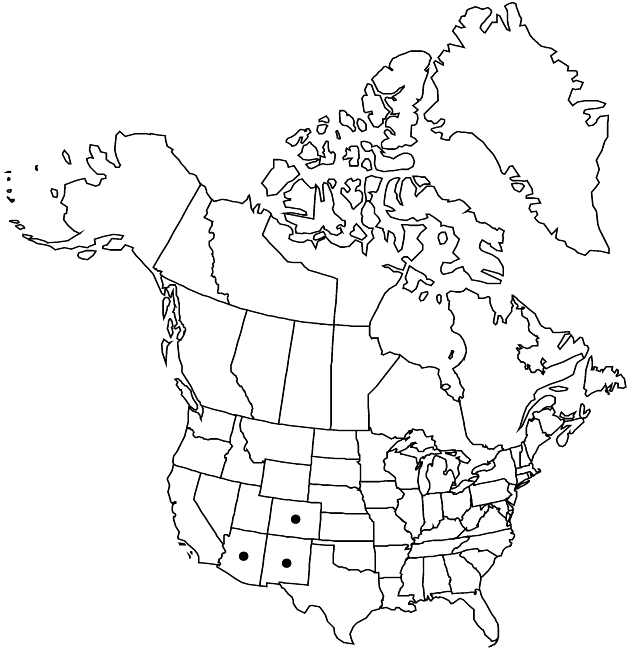Helianthella parryi
Proc. Acad. Nat. Sci. Philadelphia 15: 65. 1864.
Endemic
Treatment appears in FNA Volume 21. Treatment on page 115.
Plants 20–50 cm. Cauline leaves: largest proximal to mid stems; blades usually 5-nerved, oblanceolate or spatulate, faces rough-pubescent. Heads usually borne singly, sometimes 2–3+, ± nodding. Involucres hemispheric or broader, 15–20 mm diam. Phyllaries lanceolate to lance-linear (subequal, margins ciliate). Paleae scarious, relatively soft. Ray florets 8–14; (corollas pale yellow) laminae 25–30 mm. Disc corollas yellow. Cypselae strongly compressed, narrowly obovate (margins ciliate, faces strigose); pappi of 2 ± subulate scales plus 0–4+ shorter scales.
Phenology: Flowering Jul–Aug.
Habitat: Upper montane forests
Elevation: 2400–3600 m
Distribution
Loading map...

Ariz., Colo., N.Mex.
Discussion
Selected References
None.
Lower Taxa
None.